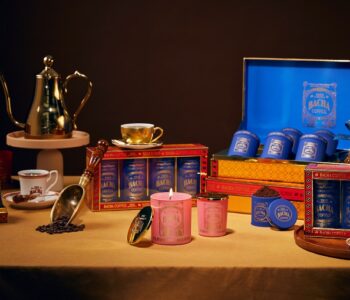The imagery that Naufal Abshar presents in his paintings are, perhaps more often than otherwise, not easy to accept.

Photo by Amir Sidharta/NOW!JAKARTA
During a selection of his works in a group exhibition in the United States recently, the first painting Naufal submitted was rejected. He proposed a few others but they were also rejected. Finally, among the third batch of painting he submitted, there was one painting that seemed to be unique and possibly acceptable to the US side of the organisers.
It was not that the painting seemed more aesthetically pleasing than his previous submissions. It showed a woman in profile, laughing away. A diagram of the social functions or her brain is shown, exposing the “inside” of her head. Her mouth is opened quite wide showing her white teeth extending across her cheeks. This did not make her appear any more pretty, but it did make it appear that the laughter was endless. This was accentuated with the letters “H A H A” painted across the painting, monumentalising the laughter.
Entitled Full Time Mother, the painting is a portrait of the artist’s mother. He portrays her as someone who keeps doing what she needs to do, always joyfully, although the burden can be quite significant.

Sure enough, the painting was accepted immediately after it was submitted for approval. Not only that, when it was exhibited it drew quite a lot of attention and interest.
Naufal is certainly not a painter that bases his art on traditional aesthetic values and norms. First of all, most of his paintings are social commentaries about the various “worlds” in which he lives. In his first solo exhibition, The World of Entertainment, currently on show at Gallerie in South Jakarta, he offers his humorous commentary on the life of socialites living in big cities like Jakarta.
Although his subject matter usually aspires towards beauty and elegance, the artist does not portray his figures elegantly. While still fashionably dressed, their mannerisms seem boisterous and wild. The mouths are open wide to an extent that they appear unnatural, to indicate continuous smiles or even laughter. Without realising it, Naufal seems to have been subconsciously inspired by the wayang figure Buto Cakil, whose lower jaw extends out further than his upper jaw showing all of his teeth open wide, or other demon-like characters of the wayang kulit.

The artist scribbles quotes of what the figures say, or comments on their behaviour and attitude. He does all this without making a sketch outlining what he wants to paint on his canvas. He immediately applies his paints onto the canvas.
“I want my ideas to be fresh,” he explains. As a result, often times, he needs to extend the limbs of the figures he depicts onto smaller canvases that he attaches onto the main canvas. The extra canvases can sometimes serve as labels or captions of his renditions. Finally, he superimposes large letters forming words over the depiction, suggesting the mood of the painting.
Born in Bandung in 1993, Naufal Abshar graduated from the Lasalle College of the Arts, Singapore and continued his studies at Goldsmith University of London. He has participated in exhibitions in Singapore, Yogyakarta, Jakarta, Venice and Washington, D.C. In 2013 he won first prize in the Indonesia Arts Festival live painting competition. His HAHA series, started in 2014, granted him recognition.
“I like observing human life as well as individual problems and issues of society. I use laughter as my approach to counter and criticize those matters,” he said.

Through the humourous and sometimes hilarious figures that he depicts, Naufal makes us join his laughter about the world of socialites. Originating from the world of entertainment, a world that we used to see on television as well as on the silver screen, but now has plagued social media and even our own real lives.
“The rapid advances in information technology also enable the socialites to be both producers and consumers of entertainment at once. Thus extends the world of entertainment to all circles, rather than owned by the socialites themselves. By staring at the laughing figures who consume entertainment in Naufal’s paintings, we are actually laughing at ourselves,” writes Chabib Duta Hapsoro, curator of the exhibition.
If mirrors are no longer effective in enabling us to reflect upon who we are, perhaps we indeed need to resort to making use of artworks to tell us who we are, where we come from and where we are headed.
_______
This article is originally from paper. Read NOW!Jakarta Magazine May 2018 issue “Building Future Leader”. Available at selected bookstore or SUBSCRIBE here.






